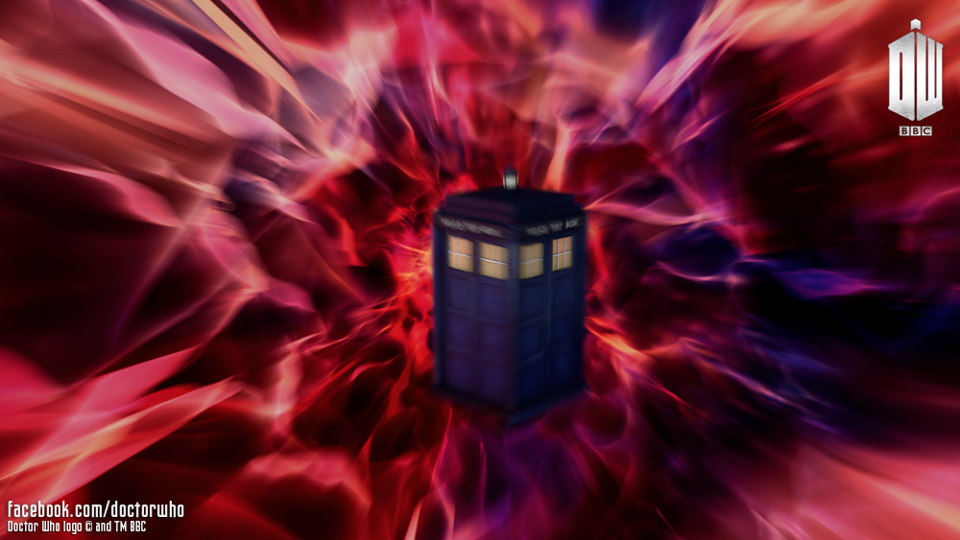A Cosmic 'Tardis': What the Universe Has In Common with 'Doctor Who'

Look out, dark energy: A TARDIS may be the real reason the universe is accelerating.
Regions in space-time that are bigger on the inside than the outside — just like the sci-fi character Doctor Who's TARDIS (Time and Relative Dimension in Space) time machine — could help explain the universe's quickening expansion.
These theoretical bubbles are named "Tardis regions." They're not a perfect explanation of how the expansion occurs, but they are a first step in making a model that is closer to reality, its proponents said. [Gallery: Dark Matter Throughout the Universe]
"The idea was to get this proof of principle, that this is possible that you can do it," Syksy Rasanen, a lecturer in theoretical physics at the University of Helsinki, told SPACE.com. "We're not claiming the inside of the hole is realistic, but it's the first model where we have an exact solution where structures that are distributed randomly in space have a significant effect on the expansion rate."
Tapping the accelerator
The universe is not only expanding, but its growth is accelerating. That startling realization occurred in 1998 after two research groups measured cosmic distances using Type Ia supernovas, which all have similar absolute brightnesses. A Type Ia appears fainter the farther away it is from Earth.
Instead of gravity slowing things down as expected, the universe was growing at a faster rate. A popular explanation offered today is a mysterious force called dark energy, which is believed to make up nearly three-quarters of the universe. No one knows what substances are in dark energy, but the leading theory proposes it is a property of space itself.
Breaking space news, the latest updates on rocket launches, skywatching events and more!
Dark energy is not the only explanation out there, however. Perhaps gravity does not behave as scientists expect it to. At great distances, maybe gravity speeds up expansion instead of slowing it down, or perhaps the acceleration is due to how certain types of structures form.
Rasanen's team is looking at that third possibility. Their model assumed that small perturbations in the structure of the universe at the age of 10 million years (an arbitrary starting age for the model, he said) could alter the universe's growth in a few billion years. The aim was to better understand how the universe evolved if, as the model assumed, the structures have a large effect.
"In this model, at early times, the holes expand [at the same rate] as the background, but as the universe becomes older and older, the hole expansion becomes more and more," Rasanen said. "The expansion rate is bigger than what you expect."
Cosmological Swiss cheese
Rasanen's team built on a cosmological model first proposed by Albert Einstein and Willem de Sitter. In simple terms, it portrays the universe as mostly homogeneous, but peppered with regions that are different than the background — almost like Swiss cheese.
Most variations of the model have the regions and the background grow at the same rate, but Rasanen's team put in variables to make those inhomogeneities grow independently. (One limitation of the model is the regions do not interact with each other or the background, something the researchers plan to address in the future.)
"With the holes in the Swiss cheese, we have built them so they are specially curved such that they get the expansion rate that we want," Rasanen said. "Though the Tardis regions we used are not realistic, the property that regions can have larger volume than expected based on their surface area is a general feature of gravity."
"This is an expression of the fact that according to general relativity, the geometry of space is not Euclidean," he added, referring to the type of geometry taught in a typical high school class. "Different regions of space are curved differently: Some have smaller volume than in the Euclidean case, others are larger. In the case of our model, we only have regions that are larger. When you take a realistic model, it is not clear whether the regions that are smaller balance out the regions that are larger."
One demonstration of space-time curvature occurs with gravitational lensing, a phenomenon that happens when a huge mass (such as a group of galaxies) bends the light of stars or galaxies behind the mass from Earth's vantage point.
The research has been submitted to the Journal of Cosmology and Astroparticle Physics and was detailed online on the preprint website Arxiv.
Follow Elizabeth Howell @howellspace, or SPACE.com @Spacedotcom. We're also on Facebook and Google+. Original article on SPACE.com.

Elizabeth Howell (she/her), Ph.D., was a staff writer in the spaceflight channel between 2022 and 2024 specializing in Canadian space news. She was contributing writer for Space.com for 10 years from 2012 to 2024. Elizabeth's reporting includes multiple exclusives with the White House, leading world coverage about a lost-and-found space tomato on the International Space Station, witnessing five human spaceflight launches on two continents, flying parabolic, working inside a spacesuit, and participating in a simulated Mars mission. Her latest book, "Why Am I Taller?" (ECW Press, 2022) is co-written with astronaut Dave Williams.
